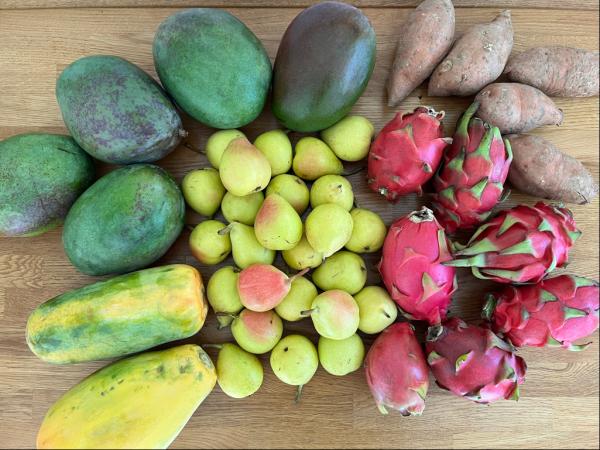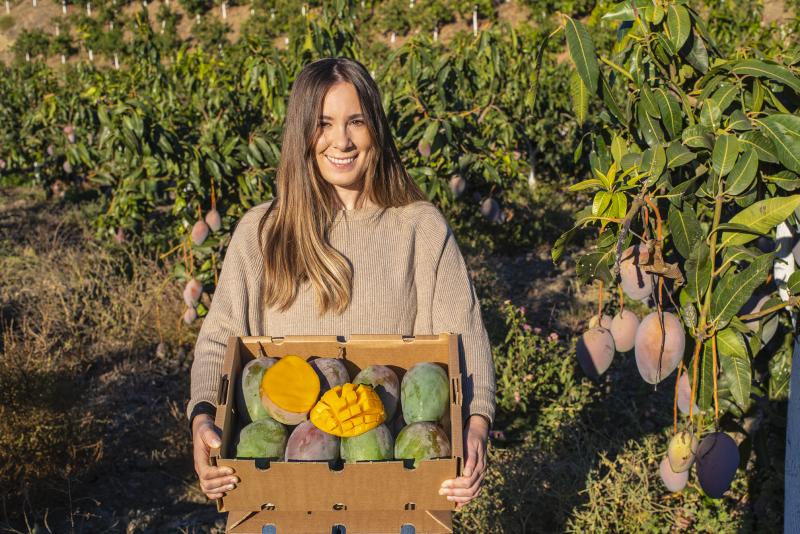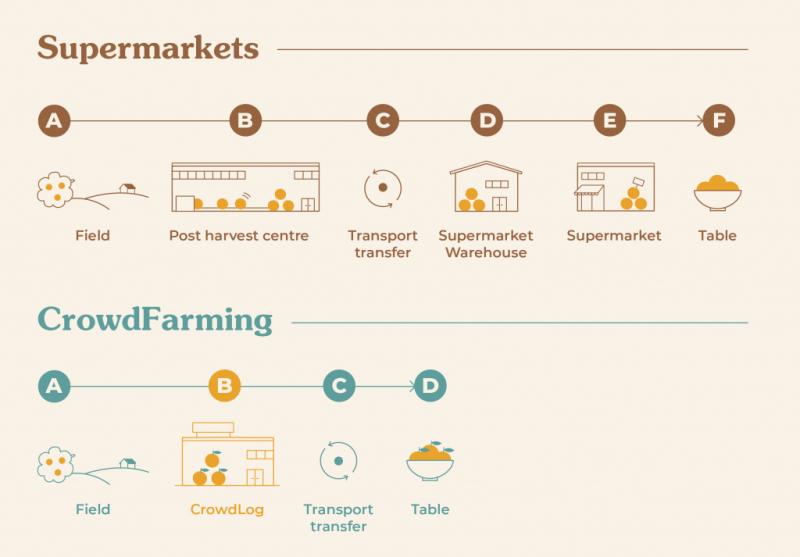How CrowdFarming's direct-selling model promotes fresh food and sustainable agriculture that cuts emissions and delivers profits to small, organic farmers
After several viral infections, including COVID-19, my health needed a boost. I started avidly researching the nutritional properties of different fruits and vegetables, and came across the health benefits of papaya.
It brought back the thought of the taste of my childhood in Haiti, where papaya, mango and other tropical fruits were abundant. But I now lived in Luxembourg and gave up buying papayas a while ago. Delicious and sweet papayas are hard to find, except for the ones flown in from Brazil, and they definitely aren’t climate friendly. As if Instagram knew about my papaya craving, an advertisement for a box of organic papayas from Spain popped into my feed. Intrigued, I click and landed on the website of CrowdFarming, a direct selling platform for European farmers.
The site represents 300 farmers from 15 countries, mainly in Europe. Customers have the option of ordering boxes of fruits and vegetables or products like honey and cheese. They can even adopt a tree, a plot of land or an animal and commit to receiving its product. I decided to order a box of papayas from Casa Alta in Malaga, Spain.
A couple of weeks later, my box arrived with a letter from the grower, Carlos del Corral, explaining that the papayas had been picked at the optimal level of maturity but still needed to ripen until their skin turned golden. After waiting patiently a few more days, I took the ripest papaya of them all, cut in half and dug in with a spoon. The papaya tasted creamy, sweet, and fresh, transporting me back to my tropical home.

I was hooked, but also baffled. How could this papaya be so radically different from what I usually buy? I explored CrowdFarming’s website and even listened to their podcasts on sustainable agriculture. I noticed that the European Investment Bank, where I work, is supporting CrowdFarming with a €15 million venture debt loan, backed by the InvestEU programme. That was the “in” I needed.
Digital pioneers
When brothers Gabriel and Gonzalo Úrculo inherited their grandfather’s orange plantation in Valencia, Spain, their family advised them to sell the money-losing farm. But they decided to give it one last try.
They started by selling to intermediaries such as cooperatives or large buyers, as their grandfather had always done. But they weren’t earning enough to cover their costs. They decided to create a website, “Naranjas del Carmen,” to sell directly to consumers across Europe. The website sold fruit to friends in Germany and Austria, but it expanded steadily by word-of-mouth. When Deutsche Welle, the German public broadcaster, did a story about the orchard, orders exploded. Demand was so strong Naranjas del Carmen couldn’t fill the orders.
Farmers in the same area of Spain who had witnessed this success reached out for help setting up their own online sales system. Gonzalo and Gabriel had put their finger on a major market gap: a massive demand from consumers and farmers to connect directly. In 2017, the Úrculo brothers, together with business partners Juliette Simonin and Moises Calviño, founded CrowdFarming to provide farmers with the services – software, web design, logistics, customer services, marketing and agronomic support – Naranjas del Carmen had developed over the years to sell directly to end-consumers.
“CrowdFarming was born as a one-stop-shop for farmers who want to create their own direct sales channel,” says Román Martínez de Aragón, head of strategy at CrowdFarming. “We take care of that complexity, so that farmers can focus on growing, producing, and harvesting their food.”
CrowdFarming is helping to digitalise the agricultural sector in Europe, which is made up largely of small producers that don’t necessarily have the means or expertise to sell directly to consumers via a website.
Direct selling also gives farmers more control over pricing. “Farmers, who were usually price-takers from supermarkets, now have the power to set their own prices – creating a paradigm shift in the industry,” says Jérôme Marcelino, the senior loan officer in charge of the investment for the European Investment Bank.
Tasty and good for the planet
CrowdFarming only features farmers producing organic food and farmers transitioning to organic. Agronomists carefully select the farmers who sell on the platform, ensuring they apply the highest sustainability, quality and production standards.
María Martínez Hijano, from Malaga, persuaded her family to convert their fourth-generation farm to organic produce when she took it over in 2017. She started selling mangoes via the CrowdFarming platform in 2020, with huge success. “We’ve been able to grow and innovate towards a style of farming that is increasingly integrated with the environment,” Hijano says. “We have price stability and can plan the harvest, while clients also enjoy price stability, premium-quality products and the satisfaction of knowing who’s behind production.”
Unlike some supermarkets, CrowdFarming does not store produce for weeks or spray it with antifungal chemicals to make it last longer. The fruits and vegetables sold on the website are picked according to client orders, and fruit and vegetables are left on the trees or bushes until they are just ripe enough to ship. In conventional farming, food is harvested when it’s convenient for the intermediary, such as the supermarket, and produce can spend months in ripening chambers or industrial refrigerators.
While the approach helps ensure CrowdFarming’s products are flavourful, it creates work for farmers, who previously would just harvest crops once a year and then ship them to intermediaries or supermarkets. With CrowdFarming, farmers need to plan out several harvests.

Farmer and agricultural engineer, María Martinez Hijano, among the mangoes trees of the family farm, Finca Los Pepones, in Malaga, Spain
“We are deeply committed to the concept of ‘farm to table,’” says Cristina Domecq, head of sustainability and impact at CrowdFarming. “The moment you order, CrowdFarming and farmers spring into action, picking, packing, and shipping the freshest organic produce directly to your doorstep. It’s all about delivering real, unadulterated freshness.”
Disrupting the food chain
CrowdFarming’s model shortens the supply chain by eliminating intermediaries and the time it takes to deliver food to the table, which reduces food waste, carbon emissions and energy consumption.
In 2022, CrowdFarming conducted a study to quantify the impact its model had on carbon emissions and food waste. The study compared the journey oranges took from farms directly to the consumer’s home with classic supermarket distribution. It found that direct sales resulted in 20% lower emissions than in the supermarket model. It also showed that only 3% of food was wasted in the supply chain, compared with 22% in the supermarket model.

Food production from the field to the table.
CrowdFarming has a team of about 200 people, mainly software developers, working to improve the platform. They also maintain in-house logistics software called “CrowdSender,” which enables the company to efficiently manage orders, grouping them by region and ensuring trucks are fully loaded, so that deliveries are made in the most cost-efficient and environmentally friendly manner.
Thanks to the European Investment Bank’s financing, the company will be able to continue to innovate in its business model, processes, digital applications, and software, says Alejandro Raboso Campos, an adviser at the European Investment Bank. And that promotes more sustainable and equitable food production.
“It is rare to come across a project with such direct and tangible results on the ground,” says Raboso Campos. “It is good for the farmers, the consumers and the environment. It is also led by a team of people who have the expertise and know-how to carry it out.”
